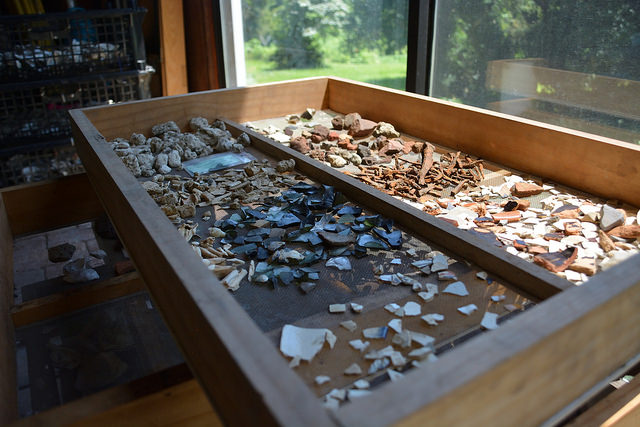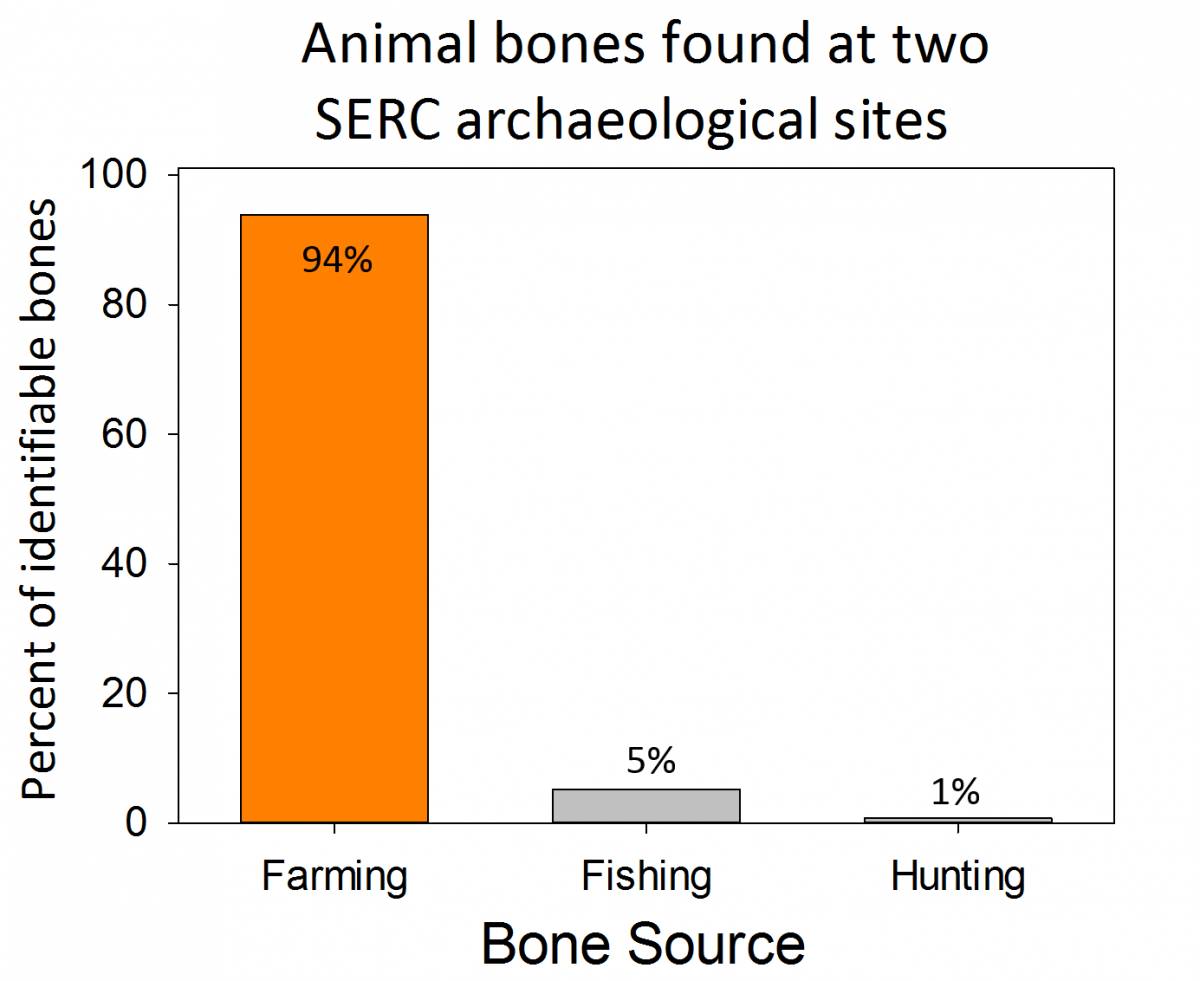Archaeology 2016 Update
Our Environmental Archaeology Lab has been collecting data from sites at SERC and around the Chesapeake region since 2012. Much of their data comes from sites throughout the SERC campus that have been populated by Native Americans, colonial families, enslaved Africans, and tenant farmers from the 1600’s onwards. This lab is entirely run by volunteer scientists, who have contributed over 2000 hours to the lab over the last year.
Volunteer scientists can help with day-to-day tasks (like sieving sediments and washing artifacts), contribute to analyses, or even develop their own research projects. This year, our volunteer scientists presented their research at the Middle Atlantic Archaeological Conference in Ocean City, Maryland, the Council for Northeast Archaeology in Ottawa, Canada and will be presenting at the Society for Historic Archaeology in early 2017. Their research topics included studies on the social organization of colonial elites, erosion and sedimentation at colonial sites, dietary preferences of two 17th century households, and comparisons of tenant farm houses. Three of the volunteer scientists, Sarah Grady, Valerie Hall, and Sarah Janesko, also wrote an article about SERC’s archaeology Participatory Science program that was published in the journal Practicing Anthropology.
Volunteer scientists collected bone fragments from two 17th century house sites to determine what the families were eating. They found that most of the bone fragments (which we interpret to mean most of their food waste) came from farmed animals, like cows, pigs, and sheep. There were also bone fragments from fish (like cod, sturgeon, and gar) and local animals (like squirrels and deer) that were trapped or hunted, but these made up a much smaller portion of the diets. Information like this tells us a lot about how these people were using the land, which can help explain some of the patterns that we still see in the local environment.




